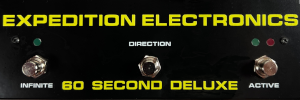Note: links to listings are affiliate links for which the site may be compensated.
via this listing
Additional Nightlife Electronics Listings
"This Roland Juno-106 (Vintage) has been fully tested and is in great working condition. It has been fully serviced at our Synthesizer Rejuvenation and Wellness Centre and given a clean bill of health, along with brand new voice chips from Analogue Renaissance."
Showing posts with label Analogue Renaissance. Show all posts
Showing posts with label Analogue Renaissance. Show all posts
Monday, March 18, 2024
Friday, July 29, 2022
1984 Roland Juno 106 w/ Analogue Renaissance AR80017A Voice Chips (Serviced) SN 487078
Note: links to listings are affiliate links for which the site may be compensated.
via this auction
"A high water mark for glassine pads, premier brass stabs, and surprisingly present basses, the Roland Juno 106 is well deserving of it's status as a classic synthesizer. All voices have been refurbished, this is a fully working specimen, with all sliders and pots cleaned and working wonderfully. Physically, this is a synth which shows it's age and use, but operationally this Juno is a superior sonic experience.
This Juno was serviced by our in-house technician, all voice chips have been replaced with new Analogue Renaissance AR80017A voice chips. This is a Japanese model (100v) unit, we switched the transformer to operate at 120V along with adding a 3 prong IEC receptable. Fantastic condition over all. Serial number: 487076"
The 6 looks more like an 8 to me, but who knows... Some pics on of the inside below.
via this auction
"A high water mark for glassine pads, premier brass stabs, and surprisingly present basses, the Roland Juno 106 is well deserving of it's status as a classic synthesizer. All voices have been refurbished, this is a fully working specimen, with all sliders and pots cleaned and working wonderfully. Physically, this is a synth which shows it's age and use, but operationally this Juno is a superior sonic experience.
This Juno was serviced by our in-house technician, all voice chips have been replaced with new Analogue Renaissance AR80017A voice chips. This is a Japanese model (100v) unit, we switched the transformer to operate at 120V along with adding a 3 prong IEC receptable. Fantastic condition over all. Serial number: 487076"
The 6 looks more like an 8 to me, but who knows... Some pics on of the inside below.
Sunday, December 12, 2021
Prophet-5 Analogue Renaissance Rev-1 Downgrade
video upload by synthlegends
Additional posts here
"Some tweaking and demonstrating the downgrade mode of analogue renaissance.
What I like in this mod is the boost switch, called Q-compensation and 12 dB Filter, which makes much power even with high resonance in the filter. You can listen it in the first patch in this video. The recording was made without processing, effects and just raw into the audio interface in mono. For further information go on the website of analogue renaissance.
I kept my curtis filter chips, so I can built this prophet everytime back in the original state.
Here is the description from the website of analogue renaissance:
This modification for the Sequential Circuits Prophet-5 reverts the Rev 3 sonically to the earlier, much bigger-sounding Rev 2! The two Prophet 5 versions sound different due to the nearly complete redesign of the voice architecture to use Curtis’ CEM chips instead of Dave Rossum’s SSM chips for the transition of the Rev 2 to the Rev 3 model. This difference in sonics has made the Rev 2’s more desirable - and significantly more expensive. Fully working prototypes have been built and tested, and have the following features:
No mods to the Prophet 5 PCBs are required.
A REV -1 simply plugs into the IC sockets, replacing each CEM3320.
Only 1 extra wire for the -15V supply needs to be soldered.
Electronics have been added that cancel out the pollution from the CEM3320’s level shifting circuitry. The little that remains (30 to 100dB attenuation depending on frequency content and Prophet component tolerances) is also moved entirely to the filter's input. So, it get's further attenuation of 24dB per octave beyond cutoff.
Extras:
The input signal has been increased a bit, since the 2040 likes to be driven a bit harder. This is no issue for the purists as it can be attenuated in the ‘mix’ section of the prophet-5.
By design the SSM2040 is also self-limiting, so the output level has been increased a lot as ample headroom was available, and this gives a much better signal-to-noise ratio and dynamic range.
REV -1 also adds two new features not present in the original Rev 2:
variable Q-compensation that restores the loss of bass when resonance is increased (14dB is lost at the onset of self-oscillation in the original filter design).
the option to use the REV -1 as 2-pole filter instead of the original 4-pole configuration. Most non-linear effects happen in the first two filter stages, and the 2-pole mode lets you hear these effects unfiltered by the last two stages.
The combination of these two extra features will make a Prophet 5 sound absolutely monstrous!
Switches to select 2-pole or 4-pole mode and the amount of Q-compensation will be included with mouting hardware.
Thanks for watching and listening."
Monday, April 26, 2021
Roland JUNO-106 / with KIWI-106 MOD & Analogue Renaissance Chips & Wood Side Panels
Note: links to listings are affiliate links for which the site may be compensated.
via this auction
"You can read about the Kiwi 106 mod here... The mod includes larger patch memory, an additional ADSR and LFO, an arp., a step sequencer, better MIDI implementation and more.
Synth Features are:
— KIWI-106 Mod - amazing. ( also has Kiwi106 overlay, the overlay is for an older version but some features are the same. The sticker overlay can be removed )
— zebra wood end cheeks
— I just had all the chips replaced with the Analogue Renaissance chips.
— comes with dust cover"
via this auction
"You can read about the Kiwi 106 mod here... The mod includes larger patch memory, an additional ADSR and LFO, an arp., a step sequencer, better MIDI implementation and more.
Synth Features are:
— KIWI-106 Mod - amazing. ( also has Kiwi106 overlay, the overlay is for an older version but some features are the same. The sticker overlay can be removed )
— zebra wood end cheeks
— I just had all the chips replaced with the Analogue Renaissance chips.
— comes with dust cover"
Monday, November 16, 2020
Prophet 5 Analogue Renaissance REV -1
synthlegends
"Demonstration of the new Filterchip Downgrade of Analogue Renaissance which uses new created SSI Filter Chips from Dave Rossum to Downgrade the Rev. 3 to the former Rev. 1 and 2 Filter Design.
For this mod you have to replace the CEM Filter Chips with a small board of 5 SSI Filter Chips. Additionally there is also a 12 dB Filter and Q-Compensation to compensate the loss of volume in high resonance sounds.
After modding the Rev. 3 gets much loader using Q-Comp; I had to decrease the volume of the oscillators in the mixer.
I let install the mod through my tech, because the old sockets must be desoldered in my opinion, otherwise you get contact problems.
In this Prophet 5 I didn't do the calibration of the filter chips, because I was not sure if I want to go back to my old CEM Filter chips. But meanwhile I won't go back and I also have to calibrate the unit.
I like the mod very much and the variation of sounds increase. The Q-Comp ist a really great feature which allows making really ultra fat resonance sounds, like Tom Sawyer Filter sweeps and other Oberheimesque Sounds (also thanks to the 12-Pole Filter).
The sound goes directly to the audio interface without any mastering, FX or equalizer.
If you want to hear my original Prophet 5 without this mod and CEM Filter Chips with a lots of the same patches view this video:" [posted here]
Sunday, November 15, 2020
Sequential Circuits Prophet 5 Rev 3 w/ Rev-1 Kit Installed SN 3585
Note: links to listings are affiliate links for which the site may be compensated.
Syntaur
"Syntaur's Sam Mims install the prototype of Analogue Renaissance's REV -1 into a Prophet 5. This amazing board replaces the CEM filter chips in a Rev 3 Prophet, and dials it back to the sound of the highly coveted Rev 2! Additionally, it adds two switches which allow the selection of either 4-pole or 2-pole filtering, and which add Q-Compensation, to make up for bass frequencies that are normally lost with high-resonance sounds. The sonic result is beastly! The REV -1 kit can be purchased here: https://syntaur.com/Items.php?Item=REV1"
via this auction
"Sequential Circuits Prophet 5 Rev 3.2, with MIDI and Analog Renaissance REV -1 Kit installed. This synth has been fully calibrated, and all key bushings have been replaced, to ensure years of playability. Aside from a small crack in the wooden right end panel (see photos), this unit is in excellent physical condition.
The REV -1 kit from Analogue Renaissance turns a Prophet 5 Rev 3 synthesizer (CEM filter chips) back to the sound of the highly-coveted Rev 2 (SSM filter chips). It also adds a 2-pole/4-pole selector switch for the filter, and a 3-position 'Q Compensation' switch to add back in low frequencies that are typically lost with high resonance sounds."
Syntaur
"Syntaur's Sam Mims install the prototype of Analogue Renaissance's REV -1 into a Prophet 5. This amazing board replaces the CEM filter chips in a Rev 3 Prophet, and dials it back to the sound of the highly coveted Rev 2! Additionally, it adds two switches which allow the selection of either 4-pole or 2-pole filtering, and which add Q-Compensation, to make up for bass frequencies that are normally lost with high-resonance sounds. The sonic result is beastly! The REV -1 kit can be purchased here: https://syntaur.com/Items.php?Item=REV1"
via this auction
"Sequential Circuits Prophet 5 Rev 3.2, with MIDI and Analog Renaissance REV -1 Kit installed. This synth has been fully calibrated, and all key bushings have been replaced, to ensure years of playability. Aside from a small crack in the wooden right end panel (see photos), this unit is in excellent physical condition.
The REV -1 kit from Analogue Renaissance turns a Prophet 5 Rev 3 synthesizer (CEM filter chips) back to the sound of the highly-coveted Rev 2 (SSM filter chips). It also adds a 2-pole/4-pole selector switch for the filter, and a 3-position 'Q Compensation' switch to add back in low frequencies that are typically lost with high resonance sounds."
Wednesday, May 27, 2020
The Analogue Renaissance REV -1 - SSM Based Chip
Published on May 27, 2020 Syntaur
"Syntaur's Sam Mims install the prototype of Analogue Renaissance's REV -1 into a Prophet 5. This amazing board replaces the CEM filter chips in a Rev 3 Prophet, and dials it back to the sound of the highly coveted Rev 2! Additionally, it adds two switches which allow the selection of either 4-pole or 2-pole filtering, and which add Q-Compensation, to make up for bass frequencies that are normally lost with high-resonance sounds. The sonic result is beastly!"
Curious if the new Sound Semiconductor SSI2140 can be swapped in as well. Note the Analogue Renaissance's REV -1 is a different chip.
Saturday, June 15, 2019
Analogue Renaissance AR3109T Roland IR3109 Chip Replacement
via Syntaur
Product description: "Analogue Renaissance AR3109T voltage-controlled filter chip, for Roland synthesizers. The original Roland IR3109 chip appears in the top photo; these chips have been long out of production, and we now have brand new clone chips just released by Analogue Renaissance (lower photo). These clones sound identical to the originals."
Additional details on the release: "After YEARS of research, and the development of a fascinating design technique, Analogue Renaissance has now released their AR3109T clone of the unobtainable Roland IR3109 VCF chip. These clones are manufactured on a 6-layer PCB, in order to fit everything in the available real estate, and they are easily 'convertible' (via a solder-bridge jumper) from VCF use to other applications. They come with solder jumpers in place, and if you need to install one in a Jupiter 6, for instance, you simply swipe the jumpers with a soldering iron to remove those connections. Jeroen has sunk loads of time and money into this project, and it is a wonderful contribution to the synth community!"
Wednesday, May 08, 2019
Analog Renaissance Tests Out the New Sound Semiconductor SSI2164
You might recall Sound Semiconductor announced the availability of the SSI2164 QUAD VCA chip back in March of 2018 (data sheet here). The SSI2154 is technically an updated design of the classic SSM2164 found in the Octave Voyetra Eight, Siel DK 600, Opera 6 & Kiwi, and the full blown Waldorf Wave. Analog Renaissance was commissioned by Sound Semiconductor to write an application note on the chip in practical use. The following are some of his findings including a couple of demos and a cool oscilloscope synth cat. :)
via Analog Renaissance:
"Sound Semiconductor (basically SSM risen from its ashes) hired me a few months back to write an application note AN701: 'Designing Voltage Controlled Filters for Synthesizers with the SSI2164' for them.
This job quickly escalated because while analyzing this IC's design, it became apparent that it is far more capable, due to its advanced design over its predecessor the SSM2164 (and its cheap knockoffs), than what I expected from reading the datasheet.
Its exceptional THD and noise specs allow building ultra clean filters that are virtually distortion and noise free, its excellent channel tracking means that it is very suitable for multi-mode filters which rely on precision and inherent in its design is the same type of asymmetric distortion responsible for the legendary SSM2040’s sound and more.
The 32-page manuscript is now being reviewed and edited to match their house-style, and should be made public soon. Imho it's quite extensive and covers next to SSI2164 specific content quite a bit of VCF design in general, circuit history and some novel stuff.
As there are already more than enough datasheets, application notes and books filled with non-working (read: tested in spice) nonsense, I accepted this job on one condition: build, test and since it's about synthesizers, hear everything before writing about it.
The small building blocks were breadboarded, but as this type of construction quickly becomes impractical for larger designs, certainly when they need multiple sources and control voltages, and impossible to do meaningful measurements on beyond a certain level, due to coupling and EMC issues, I built 3 filters in eurorack format, which also allows for quick connection to other synth and audio equipment.
SSI2164 - 2040 VCF Published on May 5, 2019 dnaab136
The first one, on the left, is an ultra-clean 4-pole VCF with a SNR better than 107dB (A-weighted) and THD is less than 0.0066%. Both these numbers are the limit of my current test equipment.
The second one, in the middle, is a VCF that employs the SSI2164's SSM2040-like non-linearities and for the first time since the early 80's done monolithically.
The 3rd one, on the right, expresses my contempt for what can and can't be done by ignoring a few mathematical constraints and is a self-oscillating 6dB/oct (1-pole slope) VCF.
SSI2164 - Mathematically impossible self-oscillating 6dB/oct VCF Published on May 6, 2019 dnaab136
Math wasn't happy with this, so it sounds a bit angry and, one of its main features is its capability of transforming sine waves into cats.
one of its main features is its capability of transforming sine waves into cats.
All 3 modules borrow 2 things from power electronics: A FET-bridge that allows plugging in the power cable in any orientation, without the voltage drop associated with diode bridges, and an S-Curve dimmer, originally intended for incandescent lamps but here used for a reversing attenuator with a dead zone in the middle.
The first 2 are multi-mode and have next to the standard 4-pole output a few extra outputs: 2 & 4-pole band-pass and a 2-pole low-pass. All outputs have the exact same phase response and can be mixed to obtain variable slope filters.
I'll bring these to Superbooth in one of these waldorf KB37 keyboards, with some basic VCO, LFO, ADSR and mixer modules for you to play with along with a printout of my manuscript and what is already edited (about 2/3rd) for publication."
via Analog Renaissance:
"Sound Semiconductor (basically SSM risen from its ashes) hired me a few months back to write an application note AN701: 'Designing Voltage Controlled Filters for Synthesizers with the SSI2164' for them.
This job quickly escalated because while analyzing this IC's design, it became apparent that it is far more capable, due to its advanced design over its predecessor the SSM2164 (and its cheap knockoffs), than what I expected from reading the datasheet.
Its exceptional THD and noise specs allow building ultra clean filters that are virtually distortion and noise free, its excellent channel tracking means that it is very suitable for multi-mode filters which rely on precision and inherent in its design is the same type of asymmetric distortion responsible for the legendary SSM2040’s sound and more.
The 32-page manuscript is now being reviewed and edited to match their house-style, and should be made public soon. Imho it's quite extensive and covers next to SSI2164 specific content quite a bit of VCF design in general, circuit history and some novel stuff.
As there are already more than enough datasheets, application notes and books filled with non-working (read: tested in spice) nonsense, I accepted this job on one condition: build, test and since it's about synthesizers, hear everything before writing about it.
The small building blocks were breadboarded, but as this type of construction quickly becomes impractical for larger designs, certainly when they need multiple sources and control voltages, and impossible to do meaningful measurements on beyond a certain level, due to coupling and EMC issues, I built 3 filters in eurorack format, which also allows for quick connection to other synth and audio equipment.
SSI2164 - 2040 VCF Published on May 5, 2019 dnaab136
The first one, on the left, is an ultra-clean 4-pole VCF with a SNR better than 107dB (A-weighted) and THD is less than 0.0066%. Both these numbers are the limit of my current test equipment.
The second one, in the middle, is a VCF that employs the SSI2164's SSM2040-like non-linearities and for the first time since the early 80's done monolithically.
The 3rd one, on the right, expresses my contempt for what can and can't be done by ignoring a few mathematical constraints and is a self-oscillating 6dB/oct (1-pole slope) VCF.
SSI2164 - Mathematically impossible self-oscillating 6dB/oct VCF Published on May 6, 2019 dnaab136
Math wasn't happy with this, so it sounds a bit angry and, one of its main features is its capability of transforming sine waves into cats.
one of its main features is its capability of transforming sine waves into cats.
All 3 modules borrow 2 things from power electronics: A FET-bridge that allows plugging in the power cable in any orientation, without the voltage drop associated with diode bridges, and an S-Curve dimmer, originally intended for incandescent lamps but here used for a reversing attenuator with a dead zone in the middle.
The first 2 are multi-mode and have next to the standard 4-pole output a few extra outputs: 2 & 4-pole band-pass and a 2-pole low-pass. All outputs have the exact same phase response and can be mixed to obtain variable slope filters.
I'll bring these to Superbooth in one of these waldorf KB37 keyboards, with some basic VCO, LFO, ADSR and mixer modules for you to play with along with a printout of my manuscript and what is already edited (about 2/3rd) for publication."
Analogue Renaissance ACID SCREAMER TS-303-GT: Morphing Distortion 2nd Prototype
The Acid Screamer morphing distortion eurorack module by Analog Renaissance utilizes the Sound Semiconductor SSI2164 QUAD VCA (see this post for some notes form Analog Renaissance on the SSI2164).
Details via Analog Renaissance who will be at SUPERBOOTH, booth H254:
"The shape by which the waveforms are bent, can go seamless from distortion (hard clipping like the DS-1) to overdrive (soft bend the waveform outward like the TS-808) and also in the opposite direction to what I call underdrive (bend the waveform inward) and looks a bit like wave folding + anything in between.
The shape can be seamlessly adjusted from perfect symmetric (like the OD-1) to assymetric (like TS-808) and beyond to one side of the waveform being overdrive and the other distortion.
This bending is frequency adjustable: You can select the part of the audio spectrum that is bent and the selectivity. This is somewhat related to a filter, but in this case it only affects the bent part of the signal and has interesting effects like isolating out the sequencer noise of a 303 or turning it into a bassdrum. This frequency selectivity is constructed around a SSI2164.
Like the previous MK2 version this one is remains capable of restoring the signal dynamics associated with overdrive and distortion effects.
Contrary to the previous version, the whole design is done from the ground up with voltage control taken in mind and a full modular version is in the works with CV-control for all parameters.
Do drop by if you're interested in more about these things. I'm at booth H254"
LABELS/MORE:
Analogue Renaissance,
eurorack,
New,
New Modules,
New Modules in 2019,
Superbooth,
Superbooth19
Wednesday, May 01, 2019
Roland Juno-106 Gravitational Slingshot Other-worldly Resonance Demo #2
Published on May 1, 2019 gstormelectro
Part 1 here.
"Audio and Video by G-Storm Electro c. 2019
Today I hastily prepared a follow up demo of my Juno-106 Gravitational Slingshot upgrade chips by Analogue Renaissance. I'm still getting to know these new chips, and getting a few questions: what's the difference, should I switch? Aside from the bass frequencies being less muddy, to me the filter resonance sounds less shrill, yet more other-worldly. There are strange interactions between the resonance and other synth parameters. With this realization, the colorful name Gravitational Slingshot seems acutely fitting.
So to me it's better to show every setting on the synth panel, in manual mode - everything on the synth front panel is 'live'. And you can see, and reproduce these settings on your own synth, having original chips. To know for yourself what the difference in sound may be.
It goes without saying, a video such as this - lengthy excursions into filter self-resonance - will have some high-frequency content so watch your levels. Also gratuitous synth-parameter noodling, non-musical in-harmonic content, and generally interminable racket.
Audio recorded direct to Tascam DR-05
No additional effects."
Tuesday, April 30, 2019
New Analogue Renaissance Roland Juno-106 80017A-GS Chips w/ "Gravitational Slingshot"
Roland Juno-106 Synthesizer w/ Gravitational Slingshot Chips Overview + Demo
Published on Apr 30, 2019 gstormelectro
"Audio and Video by G-Storm Electro c. 2019
Today I got a special package from Syntaur, the USA distributor of Analogue Renaissance products. It's a set of six 80017A-GS VCF/VCA replacement upgrade chips for the Roland Juno-106 synthesizer. What's involved to install them? How do they sound? I'll demonstrate - but you be the judge! Be sure to post in the comments what you think. If this demo was helpful be sure to like and subscribe :D
0:00 Talking
- What are the Gravitational Slingshots?
- What I did to prepare for installation.
- A word on testing/calibration: it's absolutely required
- A minor caveat about my particular synth.
4:17 Audio Demos
- Listen to this w/ some nice headphones.
Audio recorded direct to Tascam DR-05
No additional effects."
This one is in via Soviet Space Child.
Published on Apr 30, 2019 gstormelectro
"Audio and Video by G-Storm Electro c. 2019
Today I got a special package from Syntaur, the USA distributor of Analogue Renaissance products. It's a set of six 80017A-GS VCF/VCA replacement upgrade chips for the Roland Juno-106 synthesizer. What's involved to install them? How do they sound? I'll demonstrate - but you be the judge! Be sure to post in the comments what you think. If this demo was helpful be sure to like and subscribe :D
0:00 Talking
- What are the Gravitational Slingshots?
- What I did to prepare for installation.
- A word on testing/calibration: it's absolutely required
- A minor caveat about my particular synth.
4:17 Audio Demos
- Listen to this w/ some nice headphones.
Audio recorded direct to Tascam DR-05
No additional effects."
This one is in via Soviet Space Child.
Friday, January 25, 2019
Roland Juno-106 + Hard Case SN 405105
Note: links to listings are affiliate links for which the site may be compensated.
via this auction
"Excellent example of this classic synth, supplied serviced, guaranteed and with choice of voltage - all voice chips replaced with Analogue Renaissance parts for future reliability."
via this auction
"Excellent example of this classic synth, supplied serviced, guaranteed and with choice of voltage - all voice chips replaced with Analogue Renaissance parts for future reliability."
Friday, May 04, 2018
Analogue Renaissance at SUPERBOOTH - Analog distortion for the TB-303 and pretty much everything else
"TS-303 GT Acid Screamer prototype
 Totaly bonkers circuit design with Vbe multipliers, Gyrator, Capacitance multiplier and Negative Impedance Converter in a feedback loop with ridiculously high gain.
Totaly bonkers circuit design with Vbe multipliers, Gyrator, Capacitance multiplier and Negative Impedance Converter in a feedback loop with ridiculously high gain.Features:
- Jumper selectable input impedance 50k - 500k Ohm
- Variable input level: From nothing to +40dB
 - Variable output level: 0 to 8Vp-p.
- Variable output level: 0 to 8Vp-p.- Tuneable Symetry of the distortion. From perfect symmetric distortion to keeping bottom or top half of the signal intact while obliterating the other.
- Tuneable Dynamics: It analyses the volume enveloppe of the input signal and can restores this on the output signal. This from zero to doubling of the original dynamics.
- Switchable between overdrive and distortion
- Frequency selective distortion: Only distort certain parts of the spectrum, while keeping the rest itact. 2 frequency selection knobs allowing highpass, bandpass, band-reject, lowpass distortion. Do not confuse this with filtering of the input or output signal. It happens in the distortion engine itself.
- Turbo mode: Self-oscillation happening only at the highest clipping levels. Still exploring the posiblities of this one, but it already made me mistake a 606 for a 303...
- A rack version will also be available
AR3109
Replacement for the IR3109. Sounds and behaves exactly the same.
It even does the distortion that happens in the MC-202 and SH-202 when you run them at low voltage or almost empty batteries.
It's also DC-accurate. So, it also works in the portamento circuit of early Jupiter 4's.
2x1cm 6-layer pcb with plate capacitors to fit everything in the DIL-sized footprint of the original chip
LABELS/MORE:
Analogue Renaissance,
New,
New in 2018,
New Synth Effects,
New Synth Effects in 2018,
Superbooth,
Superbooth18
Sunday, July 16, 2017
Analogue Renaissance AR80017a Roland 80017a VCF/VCA voice chip for Juno106
Thursday, December 24, 2015
Christmas Camouflage for the JUNO-106 via Analogue Renaissance
via Analogue Renaissance
"As panasonic stopped making slide potentiometers a few years ago, the remaining stock of the ones that fit in the Juno-106 is now depleted and none of the available replicas are good enough according to my standards, I designed a new fader kit for the Juno-106. I added some LEDs (you can never have enough of those) to the mix and their brightness follows the position of faders.
The Unobtainium 4-position fader (custom made by Alps) is also included and will be available in non-led version. Most if it will be pre-wired to make installation easier and is designed as such (full analog design, separate power lines, hysteresis and separate reference for the HPF) to not interfere with the Juno's very sensitive readout of the faders. Fully operational protype is there. Some minor design changes need to be done for another prototype run and then it will go into production.
More info soon.
Best regards and Merry Christmas,
Jeroen of Analogue Renaissance.
LABELS/MORE:
Analogue Renaissance,
custom,
holidays,
New,
New in 2015,
New Mods,
New Mods in 2015,
Roland
Monday, March 30, 2015
ROLAND HS-60 / JUNO 106S Vintage Synth
Note: links to listings are affiliate links for which the site may be compensated.
via this auction
 "“Synth has just been serviced & calibrated; one voice chip has been replaced with a brand new modern equivalent chip from Analogue Renaissance in Belgium; all sounds have been reloaded & all settings are back to factory reset; all knobs & sliders have been cleaned; all functions have been tested & working fine. Has almost no wear or damage of any kind & is in superb condition.”
"“Synth has just been serviced & calibrated; one voice chip has been replaced with a brand new modern equivalent chip from Analogue Renaissance in Belgium; all sounds have been reloaded & all settings are back to factory reset; all knobs & sliders have been cleaned; all functions have been tested & working fine. Has almost no wear or damage of any kind & is in superb condition.”
Never heard this rumor before: "It’s been touted that the HS-60 / JUNO 106S has a fatter sound than the regular JUNO 106 (apparently because of the amplifier circuitry) but I don’t know enough about the JUNO 106 to give an unbiased opinion... Maybe it’s the fact that its tame looks contrast the huge, polyphonic analogue sound!"
via this auction
 "“Synth has just been serviced & calibrated; one voice chip has been replaced with a brand new modern equivalent chip from Analogue Renaissance in Belgium; all sounds have been reloaded & all settings are back to factory reset; all knobs & sliders have been cleaned; all functions have been tested & working fine. Has almost no wear or damage of any kind & is in superb condition.”
"“Synth has just been serviced & calibrated; one voice chip has been replaced with a brand new modern equivalent chip from Analogue Renaissance in Belgium; all sounds have been reloaded & all settings are back to factory reset; all knobs & sliders have been cleaned; all functions have been tested & working fine. Has almost no wear or damage of any kind & is in superb condition.”Never heard this rumor before: "It’s been touted that the HS-60 / JUNO 106S has a fatter sound than the regular JUNO 106 (apparently because of the amplifier circuitry) but I don’t know enough about the JUNO 106 to give an unbiased opinion... Maybe it’s the fact that its tame looks contrast the huge, polyphonic analogue sound!"
Thursday, January 15, 2015
BT's Kiwi 106 - Part 5 (Sonic Mayhem Part 2)
Published on Jan 15, 2015 Syntegrator
"Analogue Renaissance have just announced a new generation of their Juno-106 filter chip replacement, and fortunately for BT and Sonic Mayhem, I happen to have been sent three of the first sets to leave the factory- One's for BT, one's for Sonic Mayhem, and one's for showing at the NAMM show next week!"
All parts here.
Tuesday, October 14, 2014
BT's Kiwi-106: Part 4 - Analogue Renaissance
Published on Oct 14, 2014 Syntegrator
"Here I install a complete set of Analogue Renaissance filter chips and a complete set of Analogue Renaissance Wave chips into BT's Juno-106.
Check them out at : http://www.analoguerenaissance.com/D8...
and:
http://www.analoguerenaissance.com/D5..."
All parts here.
Wednesday, March 27, 2013
Packrat's Juno-106
Playlist:
Packrat's Juno-106 - Part 1 Published on Mar 27, 2013
"I don't normally do repairs for others, but this is a very special case: In this playlist I service and recondition the actual Juno-106 that was the inspiration for one of my fave Packrat comic strips by the infamous artist David C. Lovelace of UMOP dot COM fame.
Don't worry. This is the only time on the Syntegrator channel that I will read a comic out loud to you complete with character voices. That said, it's nice to know those two years I spent at acting school in my youth finally came in handy for something... ;-)"
Packrat's Juno-106 - Part 2 Published on Mar 27, 2013
"A quick once-over of this fairly pristine unit. The reverence shown by Packrat to his 'True Love' definitely applied to the real synthesizer behind the comic strip!"
NEXT PAGE
HOME
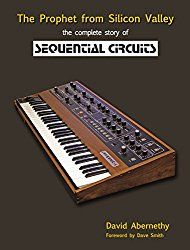



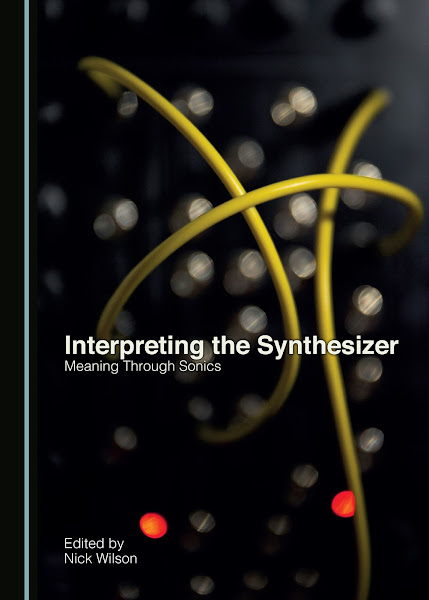
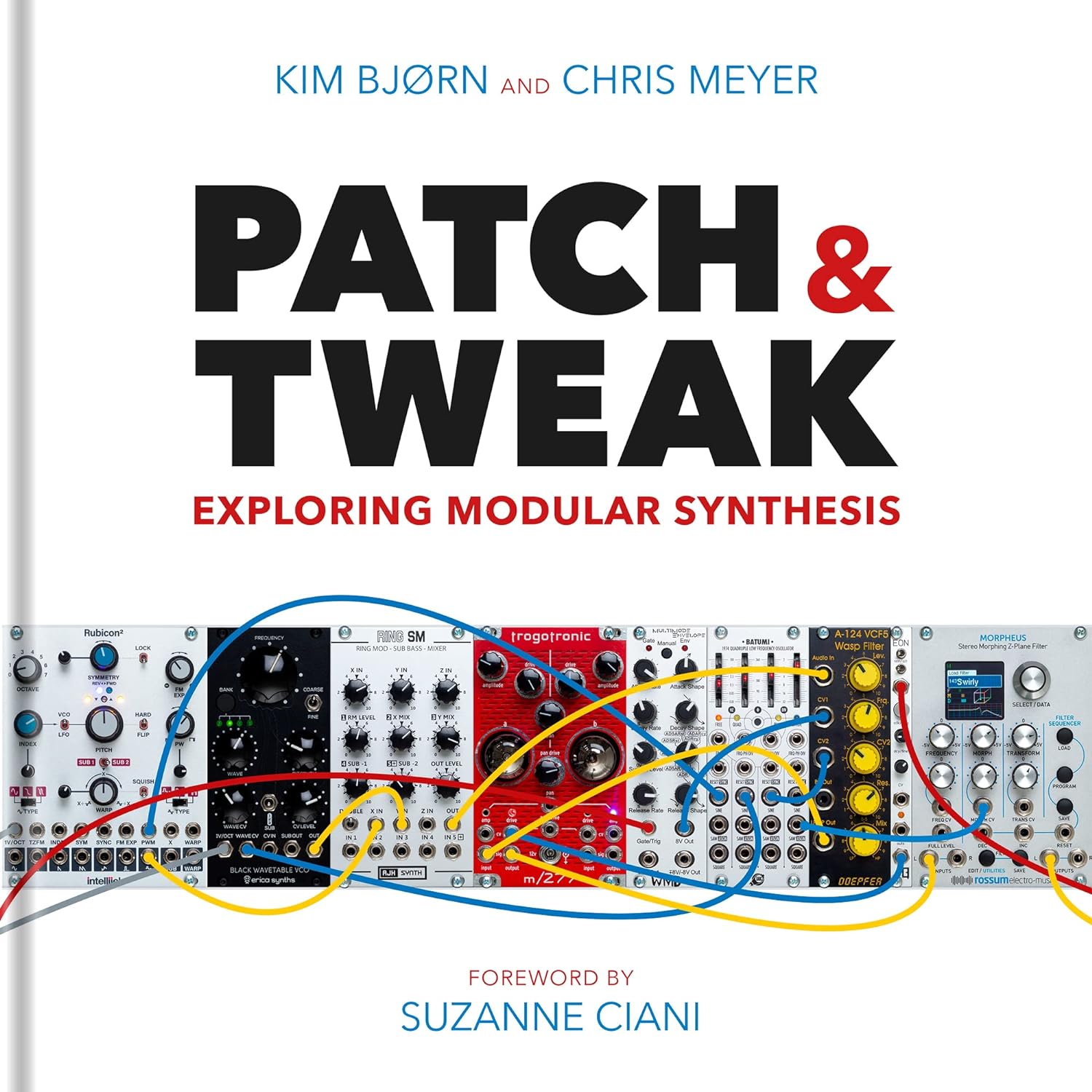

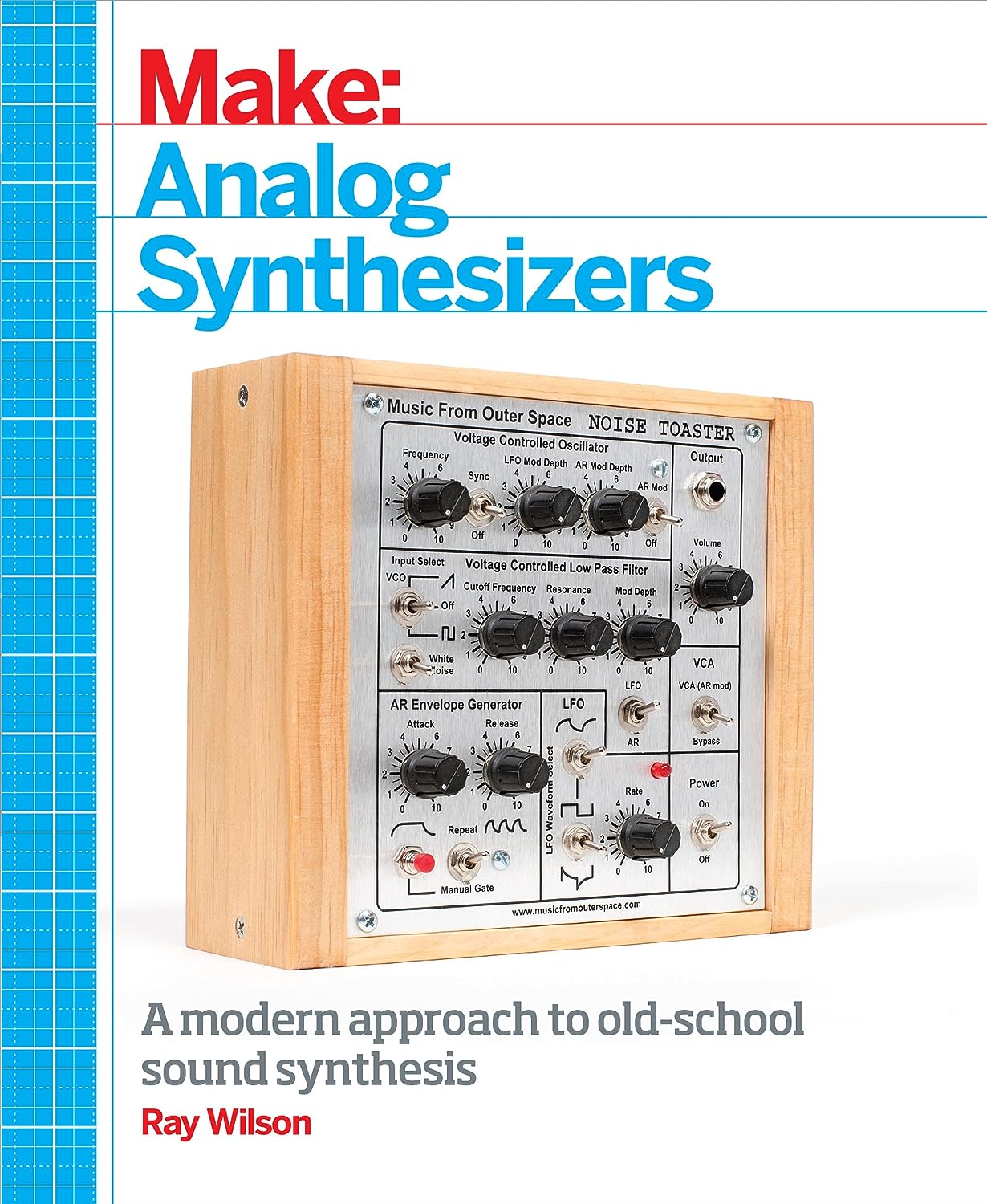

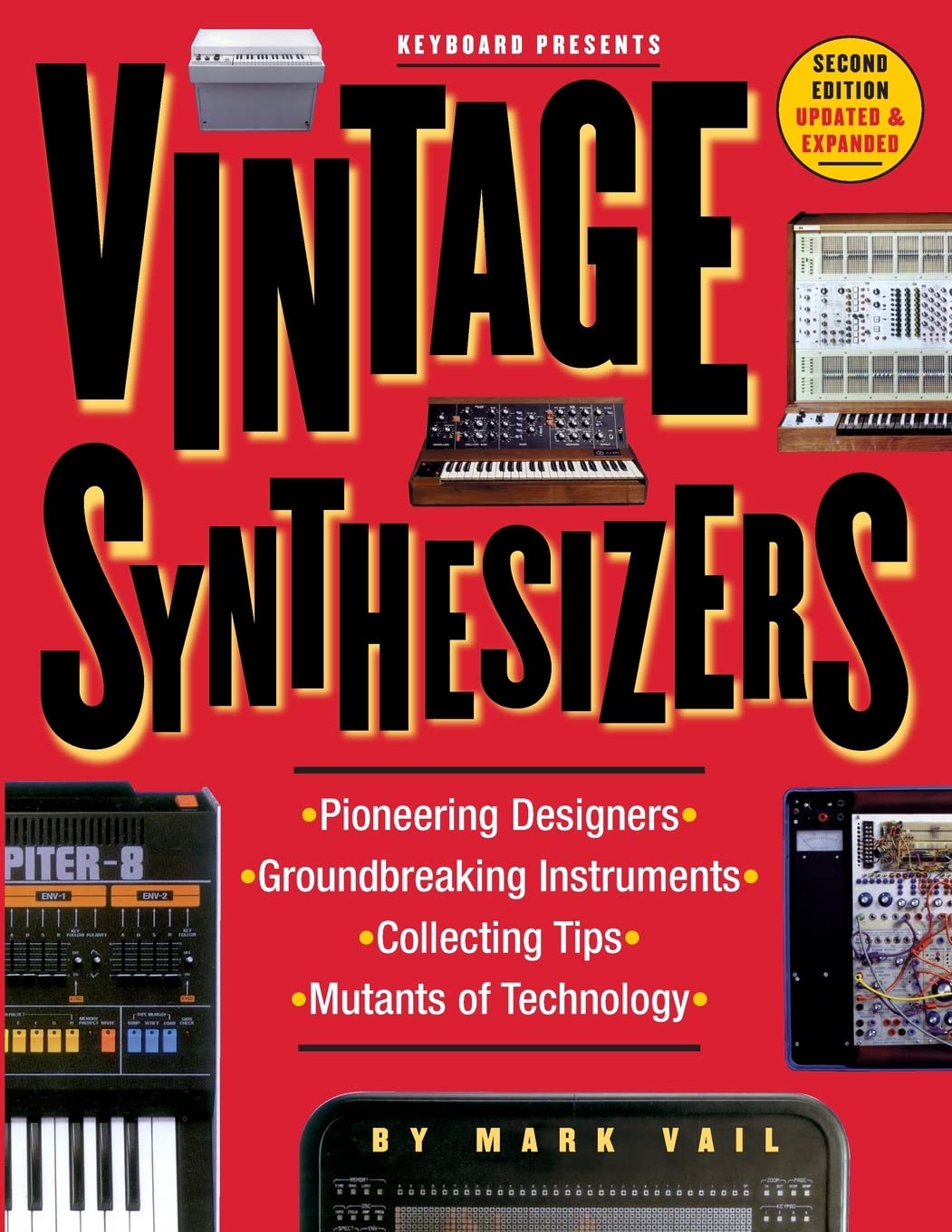
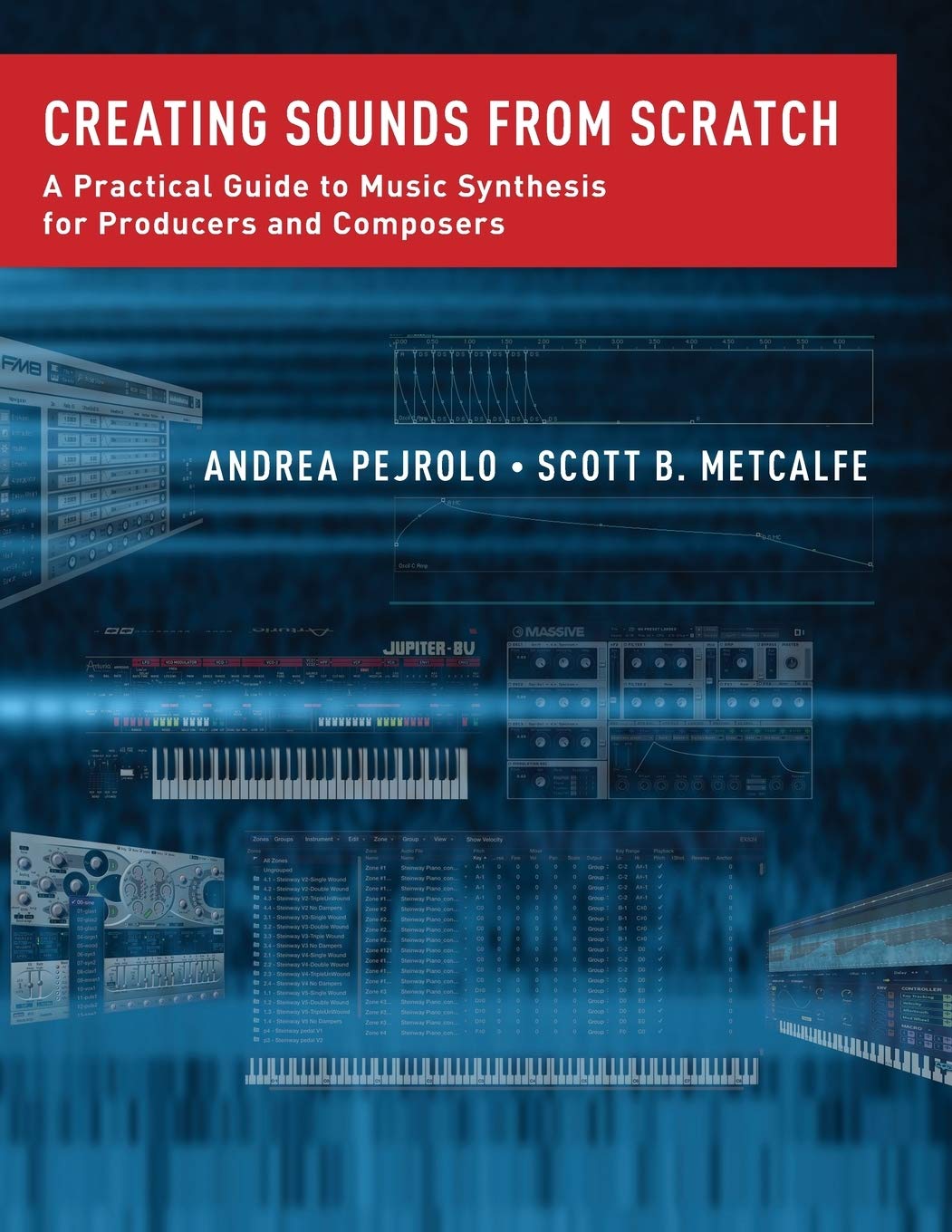
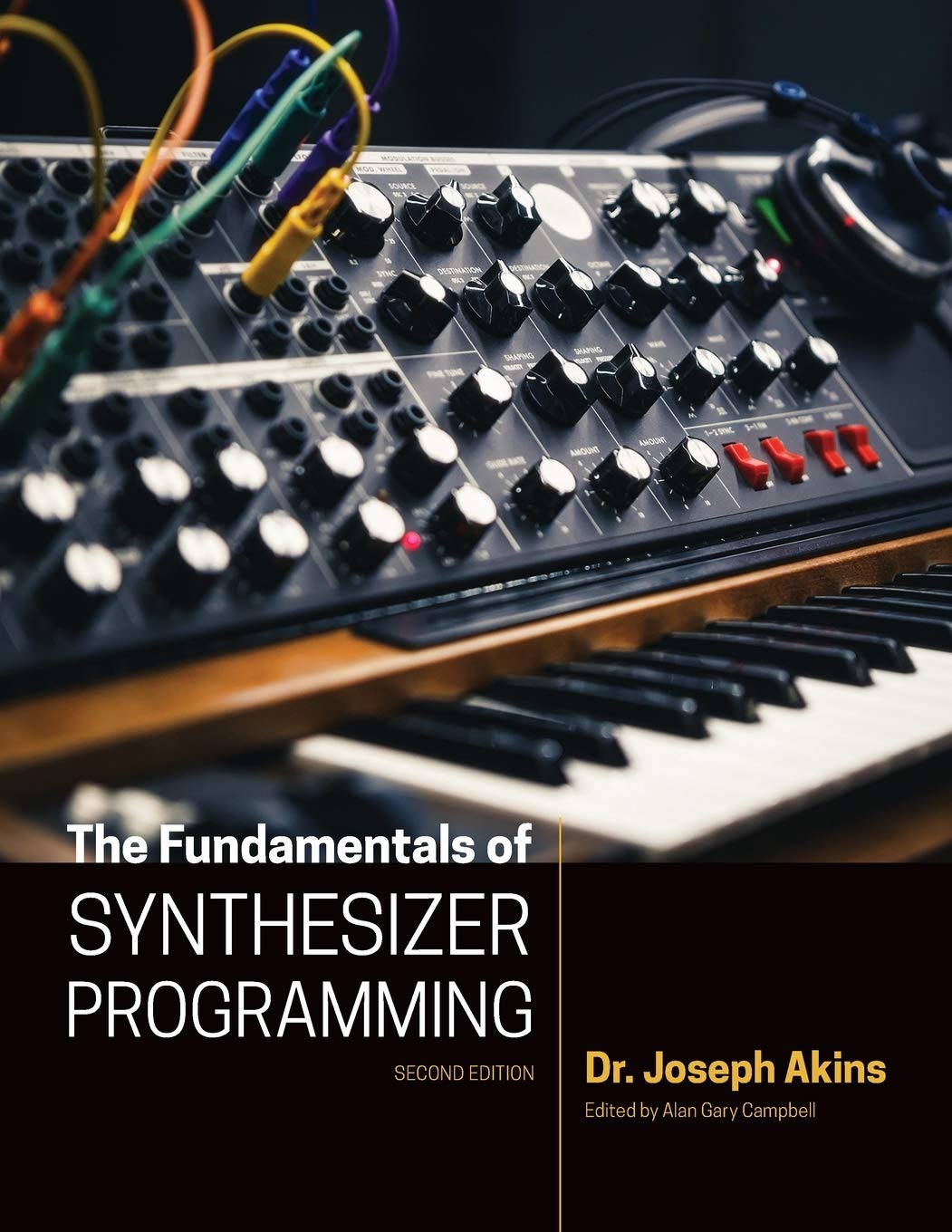

© Matrixsynth - All posts are presented here for informative, historical and educative purposes as applicable within fair use.
MATRIXSYNTH is supported by affiliate links that use cookies to track clickthroughs and sales. See the privacy policy for details.
MATRIXSYNTH - EVERYTHING SYNTH













© Matrixsynth - All posts are presented here for informative, historical and educative purposes as applicable within fair use.
MATRIXSYNTH is supported by affiliate links that use cookies to track clickthroughs and sales. See the privacy policy for details.
MATRIXSYNTH - EVERYTHING SYNTH

























